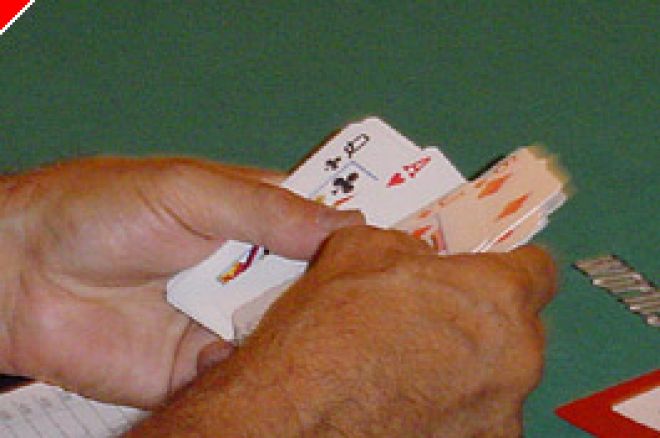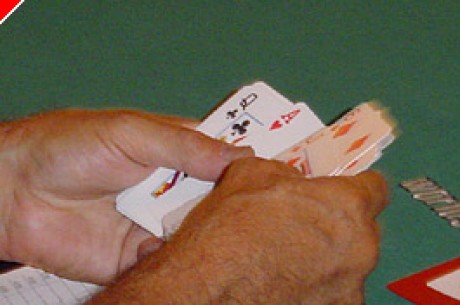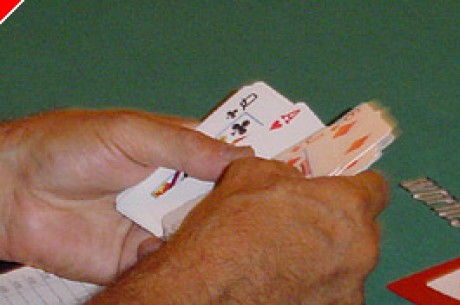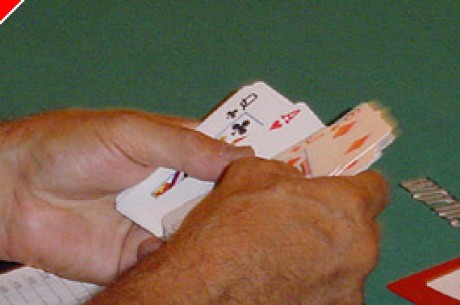Stud Poker Strategy - Adjustments for Very Good Games, Part II

I've been writing about how to take advantage of a very good game �C a game with lots of loose action �C though not a ramming-jamming game with lots of raising. This game calls for a different approach. I started out last time by talking about not playing with scared money. I'll cover two other rules in this column.
Rule #2: Play more loosely with hands that are big draws.
There's the old adage, "play loose in a tight game and tight in a loose game". I'm suggesting the opposite here �C when you have a big draw. When you have a flush draw, a straight draw, low pairs, or even a hand with just an Ace and a King you should generally call along �C especially if, as will normally be the case in these loose games, there are many other players calling along with you. You should be more cautious if the pot is raised on third street �C as opposed to just playing for the bring-in. But even so, with the two or three other callers whom you expect, you should call a completion as well.
Playing a draw on fourth street is a little less certain, though in general you should call along for a single bet even if you don't hit your fourth card to a straight or a flush �C and even if you are drawing to a low or medium concealed pair. This presumes a few things. First of all, your cards need to be live. If you see three of your suit elsewhere, or two of your straight cards, dump the hand for a bet. But you can take a card off even if you don't hit and your cards are live (as opposed to dumping the hand in a tightly structured game if you don't hit). I'm also presuming that your opponents don't seem to hit anything that greatly helps them. If, for example, an opponent pairs a door card and makes a bet, I recommend a fold under most circumstances �C he may well have hit trips. You don't want to be playing a draw against an opponent who is drawing to a full house.
The basic idea here is that you want to take advantage of all of the loose money by playing those hands that may have a lower frequency of hitting than would be profitable in a more tightly structured game. You can afford to be looser because the reward at the end of the hand will be much greater than in your typical game.
Rule #3: Isolate weak players with your betting action if possible.
You want to have the best shot of winning money from a fish. You do this by, with your betting action, preventing other people from playing a hand against him. This often involves raising even when you know that you are in second place.
These large pots provide can be profitable to you even with hands that are not favorites �C if, after a substantial amount of money has gone into the pot, you can knock out other players. Think about it this way. Imagine that the house adds $1,000 to the pot in a $20/40 game. You'd want to limit the number of people competing for that added money if at all possible. Even a hand with only a 10% shot at winning against one other player would be profitable if it were played heads up in a $1,000-added pot.
The same principle applies here. When the pot gets large enough, with the calls of loose players, you should sometimes use your betting action to force out other players who might fold for a double bet.
Here's an example. A loose player opens the betting for $40 with an Ace and a two flush on board. If you're next, and have just gotten a live card, even if you only have a pair you should sometimes raise �C especially if you have an image as a tight/aggressive players. Your opponents with anything less than very strong hands may well fold to your raise, fearing you hit trips. This is what you want. When you add in the possibility that your betting opponent doesn't have the hand he's representing and that he might fold as well to your raise, even if your lower pair is drawing against a pair of Aces, you're still in a profitable situation in the hand since the pot has been so enriched by all of the loose calls on third and fourth street.
Here's the math of it for those of you who are interested. If you're drawing on fifth street with an underpair to an overpair, all other things being equal, you'll end up with the better hand on the river about 27% of the time. Assuming five players on third and fourth street, the pot will be, roughly $230 (roughly $30 in antes and bring-in and two $20 bets from five players). Assuming the hand is bet on each of the remaining street, it will cost you $120 more, making the final pot $470. 27% of $470 is $126.90. That's a $6.90 profit on your investment of $120.00. (That's quite different from a hand played heads up from third street, when the pot on fifth street is only $120. In that case you should surely fold.)
This strategy adjustment comes at a cost, of course. Other players in the game may also realize the advantage of this play. They too may become more aggressive, especially on the later streets when the pot has been enriched. You don't want to encourage this �C so you should resist the temptation to brag about your accomplishment by showing your accomplishment when your opponent folds or when he ends up with the better hand.
In my next column I'll cover a few more alterations you can make to your game to take advantage of really good games.








